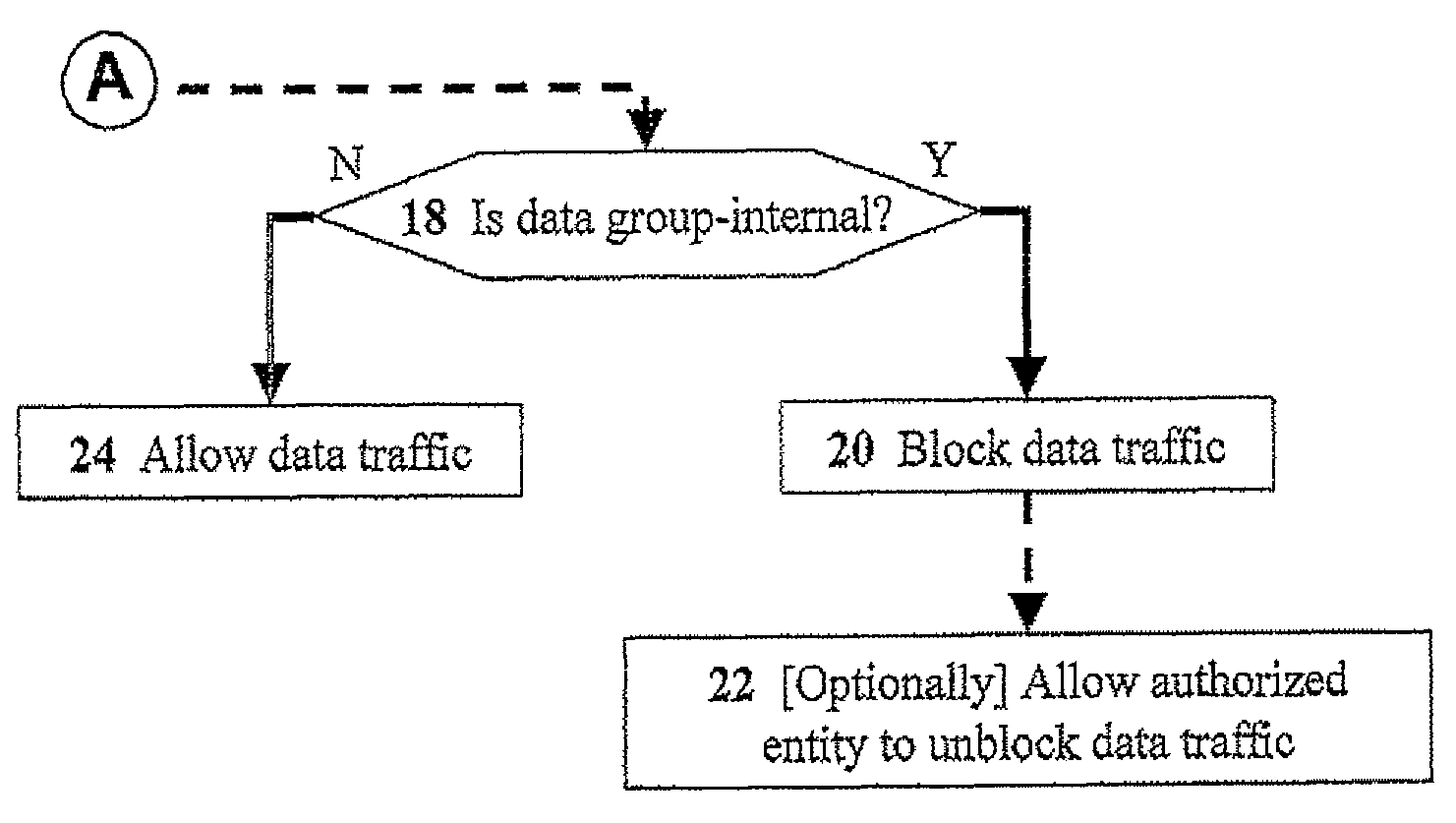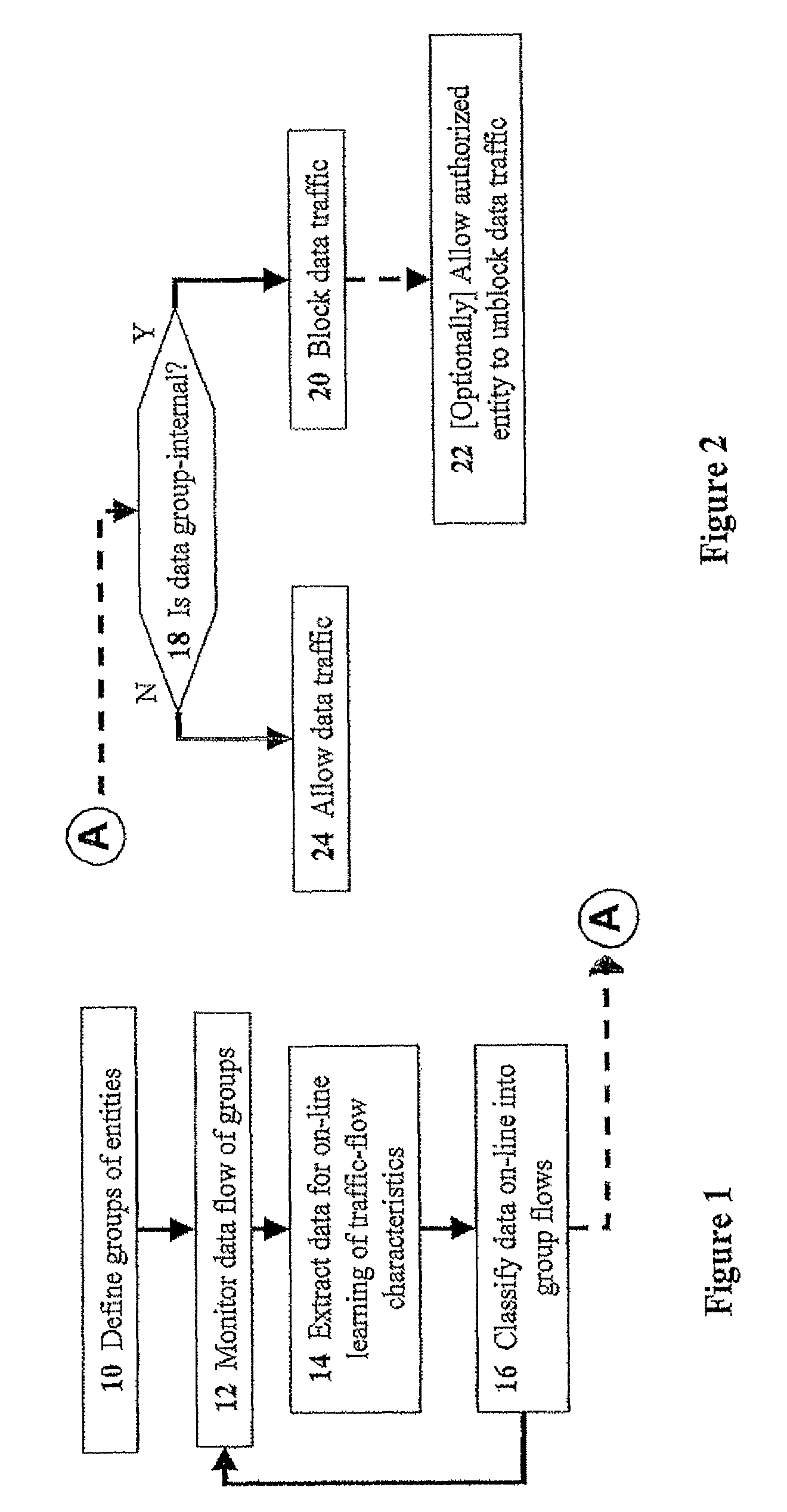Methods for automatic categorization of internal and external communication for preventing data loss
a technology of automatic categorization and data loss, applied in the direction of transmission, energy consumption reduction, sustainable buildings, etc., can solve the problems of data loss, data loss, data loss, etc., and achieve the effect of preventing data loss
- Summary
- Abstract
- Description
- Claims
- Application Information
AI Technical Summary
Benefits of technology
Problems solved by technology
Method used
Image
Examples
Embodiment Construction
[0036]The present invention relates to methods for automatic categorization of internal and external communication for preventing data loss. The principles and operation for methods for automatic categorization of internal and external communication, according to the present invention, may be better understood with reference to the accompanying description and the drawings.
[0037]As mentioned above, preferred embodiments of the present invention employ auto-learning classification schemes. Instead of classifying all data in advance, the system classifies the data continuously; and then decides in run-time whether the receiver is allowed to view the data.
[0038]Referring now to the drawings, FIG. 1 is a simplified flowchart of the initial and auto-learning steps for automatic categorization of internal and external communication for preventing data loss, according to preferred embodiments of the present invention. The process starts with an initial procedure of defining groups of entit...
PUM
 Login to View More
Login to View More Abstract
Description
Claims
Application Information
 Login to View More
Login to View More - R&D
- Intellectual Property
- Life Sciences
- Materials
- Tech Scout
- Unparalleled Data Quality
- Higher Quality Content
- 60% Fewer Hallucinations
Browse by: Latest US Patents, China's latest patents, Technical Efficacy Thesaurus, Application Domain, Technology Topic, Popular Technical Reports.
© 2025 PatSnap. All rights reserved.Legal|Privacy policy|Modern Slavery Act Transparency Statement|Sitemap|About US| Contact US: help@patsnap.com


